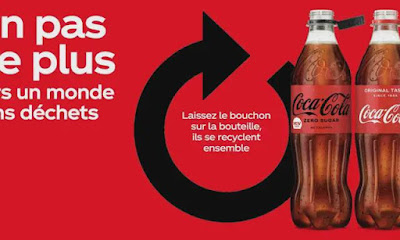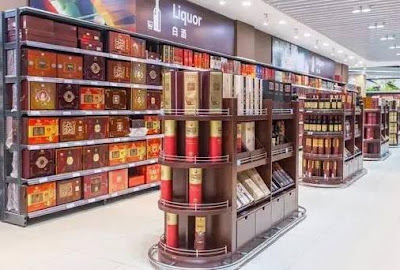China Packaging
Monday, November 8, 2021
Coca-Cola Unveil New Eco-friendly Packaging Design
Sunday, September 26, 2021
Primary and Secondary Packaging
"Primary and secondary packaging"
What is primary packaging?
What is secondary packaging?
Secondary packaging is the one over the primary packaging of the product. It can be a large package of potato chips that contains multiple small bags, a shrink package that packs multiple boxes of beverages, or a cardboard gift box with canned beer.What is tertiary packaging?
What's the Best Packing Material for Fragile Items
Fragile items are quite different from ordinary products, and more care should be given to during handling and transportation. Under normal circumstances, fragile goods should be protected both inside and outside before shipping.
How to packing fragile items?
External packaging
External packaging, usually cartons, is the protective packaging that goes around outside of the fragile items. This is the most commonly used and necessary way to avoid damage to the fragile items in transit. The outer packaging cartons should have strong compression resistance and non-deformation ability, and can effectively protect fragile items from damage during normal storage, stacking, and transportation.
However, outer packaging cartons are from enough to protect fragile items. Various happenings such as bumps and shaking will inevitably be encountered in transit(You can't expect porters or warehouse worker to treat your fragile goods with special care amid mountains of boxes).
Inner Cushioning
Therefore, internal cushioning for fragile products is extremely necessary. Simply put, the function of the inner packaging is to isolate the fragile product from direct contact with the packaging carton, and fix it to prevent it from shaking in the box. Therefore, many people choose cushioning filling packaging materials as protective packaging materials for fragile products. Cushioning packaging materials can return to the original shape (or approximately) in a short time after being subjected to external impact, This can further provide a buffering effect and protect the fragile items from damage by shaking, bumps, vibrations, etc.
What's the best packing material for fragile items?
Features an excellent internal cushioning packaging material needs to have:
Thursday, September 23, 2021
Why Do We Need Food Packaging?
What is the food packaging?
Why do we need food packaging?
Proper packaging of food will bring great convenience and benefits to producers, storage and transporters, sales operators and consumers. In a nutshell, food packaging can achieve the following direct effects:
(1) Protect food and prevent food spoilage.
Through scientific and reasonable selection of packaging materials and packaging technology, the food is separated from the surrounding environment, thereby eliminating environmental factors (oxygen, humidity, light, temperature, and microorganisms) on food. Avoid physical and chemical changes in the food, ensure the stable quality of the food in the circulation process, and extend the shelf life and storage period of the food.
Sunday, September 12, 2021
Zhejiang bans the use of non-degradable plastic packaging from 2022
Recently, Zhejiang Provincial Development and Reform Commission of China issued a notice on the public solicitation of opinions on the "Zhejiang Province Express Mail Excessive Packaging Management Work Plan (2021-2022)". The draft was jointly drafted by eight departments including the Provincial Development and Reform Commission and the Provincial Postal Administration.
The "Plan" adheres to the concept of green and low-carbon circular development, and in accordance with the overall idea of "prohibition, restriction, reduction, recycling, and reduction", it highlights precise policy implementation, closed-loop management, strengthens standard guidance, law enforcement supervision, mobilizes the entire society to act together, and steadily promotes mail express mail Excessive packaging and random packaging management.
Sunday, September 5, 2021
China packaging demands fall short of expectation, will the "Golden September" fail to come?
Saturday, September 4, 2021
Downstream industry rebounds, pulp futures rose sharply and exceeded the 6,300 yuan
Last Wednesday, pulp futures prices surged 5.01% to 6,366 yuan/ton. In the downstream raw paper market, price increase letters are frequently issued, and the rebound in the price of white cardboard still supports the pulp price. At the same time, with the arrival of the Q3 industry peak season, the downstream boom has rebounded. The operating rate of downstream pulp mills is expected to increase, and the market's demand for pulp is expected to increase. In addition, the increase in external quotations has also provided a rebound momentum for domestic pulp futures.
The analysis believes that the main event drivers come from three:
First, since entering the third quarter, the wildfire situation in Canada's B.C. province has not been significantly improved. Just one week after Canfor announced that its B.C. plant would reduce its production capacity of 115 million board feet in the third quarter, Interfor also announced that its sawmill in B.C. was facing the risk of shutting down due to local wildfires and raw material supply problems. According to current information, Interfor expects to cut at least 50 million board feet of production capacity in August. Depending on the changes in weather conditions, there may be further production cuts and shutdowns in September.
Importance of Product Packaging
In this era of commodity boom, we're just too familiar with various product packaging boxes, as they're so ubiquitous in our daily l...

-
In this era of commodity boom, we're just too familiar with various product packaging boxes, as they're so ubiquitous in our daily l...
-
What is the food packaging? Food packaging is packaging for food. It is an integral part of food commodities. One of the main projects in th...
-
Distinctive business sizes and spaces are being passed on with the Custom Boxes best quality and down to earth bundling answers for their i...











